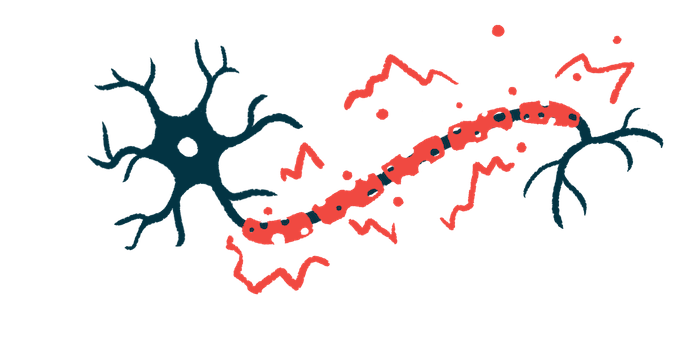Study finds potential strategy for myelin repair in MS
Targeting SOX6 protein could lead to new treatments
Written by |

Targeting a protein called SOX6 could be an effective way to promote myelin repair in people with multiple sclerosis (MS), a study found. Researchers said the results point to a way for new therapies to treat the condition.
The study found SOX6 could control the maturation of oligodendrocytes, the myelin-making cells in the brain, stalling them in a progenitor state that prevents them from producing myelin.
Targeting this protein may be an effective way to promote myelin repair in people with MS, who seem to have a more active protein than healthy people.
“We believe these new insights will help deliver on the promise of regenerative therapies that MS patients so urgently need,” Paul Tesar, PhD, co-author of the study and a professor at Case Western Reserve University, said in a university press release.
The study, “Transient gene melting governs the timing of oligodendrocyte maturation,” was published in Cell.
MS treatments haven’t been able to repair myelin
MS is an inflammatory disease marked by damage to the myelin sheath. This fatty covering surrounds nerve fibers and helps them send electrical signals, a bit like rubber insulation around a metal wire. Myelin damage in MS leads to problems with nerve signaling, causing MS symptoms.
No treatment has been proven to promote myelin repair in MS, which could restore nerve signaling and help patients regain the ability to perform certain functions.
“MS is a progressive disease that gets worse over time and patients still lack therapies that can restore the myelin they’ve lost,” Tesar said.
Myelin in the brain is made by specialized cells called oligodendrocytes. These cells have some capacity to repair damaged myelin, but their repair abilities are limited in MS for reasons that aren’t fully understood.
SOX6 is a transcription factor — a protein that helps to control which genes inside a cell are turned on or off. In their study, researchers showed that during oligodendrocyte development, SOX6 becomes active to turn on several genes that keep the cell in an immature state. When SOX6 shuts off, the oligodendrocytes can fully mature and produce myelin.
Data showed that this mechanism normally helps to prevent oligodendrocytes from making myelin when it isn’t needed.
“We were surprised to find that SOX6 can so tightly control when oligodendrocytes mature,” said study co-author Kevin Allan, MD, PhD, who worked on the research as part of recently completed graduate training at Case Western.
Examination of brain samples from people with and without MS showed that oligodendrocytes in MS brains show signs of increased SOX6 activity. This implies that MS may cause problems with oligodendrocyte maturation, which could hinder myelin repair. If that’s true, the researchers reasoned, blocking SOX6 could help promote oligodendrocyte maturation and, therefore, myelin repair.
“We demonstrate that a population of immature oligodendrocytes with a SOX6-driven gene signature is enriched in human multiple sclerosis brain tissue compared with healthy controls,” the scientists wrote. “These observations suggest that therapies targeting the stalled immature oligodendrocyte state, through [a temporary reduction in SOX6 levels], could offer an approach to unlock the terminal maturation of oligodendrocytes to form new myelin.”
As proof of principle for this idea, the scientists conducted tests in which they reduced SOX6 activity in healthy mice. As expected, this led to an increase in oligodendrocyte maturation and myelin production.
The researchers stressed that more work is needed to explore this concept in preclinical MS models and evaluate safety before this approach can be tested in people with MS.
“Our findings suggest that oligodendrocytes in MS are not permanently broken, but may simply be stalled,” said Jesse Zhan, a study co-author and medical student at Case Western. “More importantly, we show that it is possible to release the brakes on these cells to resume their vital functions in the brain.”





